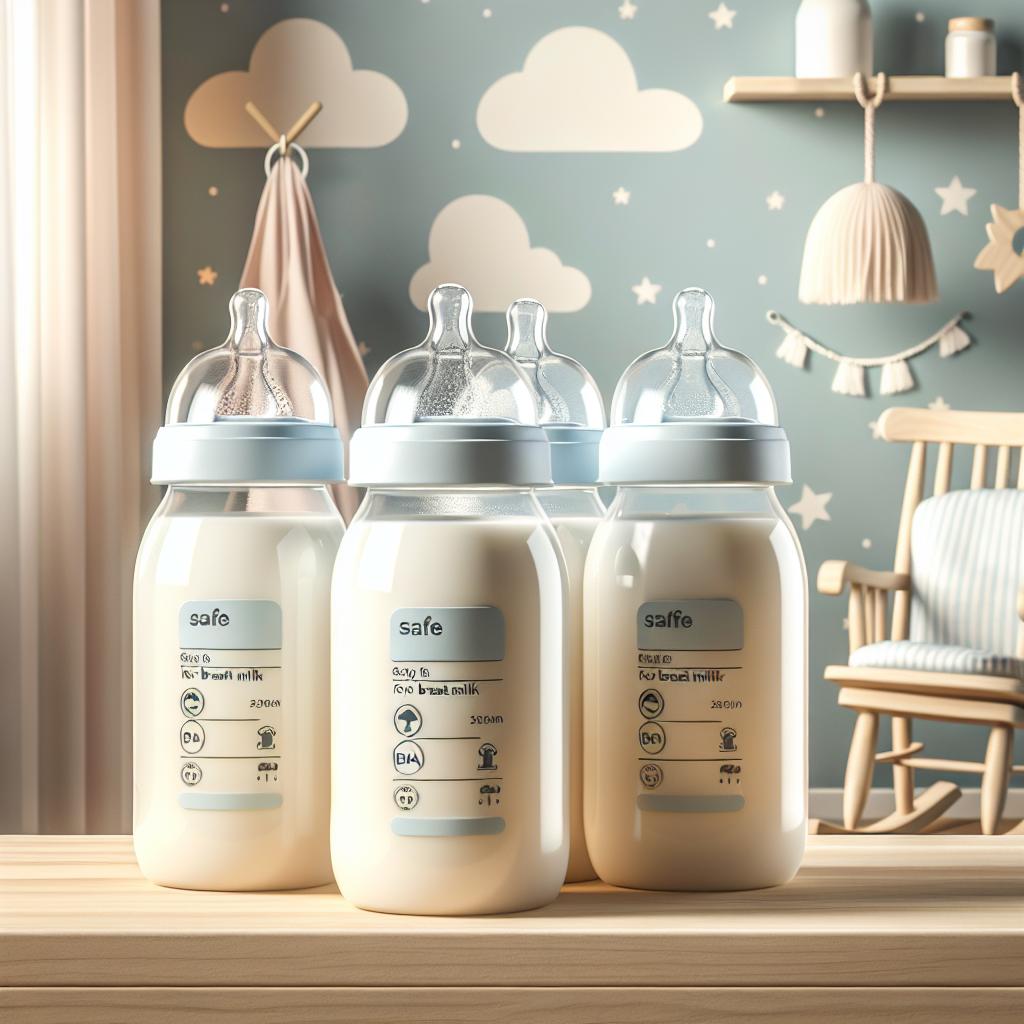Bottle Feeding Tips for Breastfeeding Moms: Your Ultimate Guide
The journey from breastfeeding to bottle feeding can be a daunting one, especially for first-time moms. But with the right information and understanding, transitioning can be a breeze. Let’s explore some bottle feeding tips for breastfeeding moms to create a fuss-free feeding experience.
Recognizing the Right Time to Introduce the Bottle
Knowing when to introduce the bottle is a common dilemma for most breastfeeding moms. While babies can start using a bottle at any time, experts recommend waiting until breastfeeding is firmly established. This typically occurs around 4-6 weeks. Introducing the bottle too early may cause confusion for the baby, while delaying it can result in rejection of the bottle.
Choosing the Right Bottle for Your Baby
When it comes to choosing a bottle, not just any bottle will do. Babies are used to a certain feeding experience from breastfeeding, and a suitable bottle can help mimic this phenomena. This concept of simulating the breastfeeding experience, also known as biomimetics, can help simplify the transition process. For more detailed information about biomimetic bottles, click here.
Expert Tips on How to Bottle Feed Your Baby – For You and Your Partner
- Hold your baby close: Keeping your baby cradled close to your chest during feeding can help them feel secure and loved. This position also encourages bonding between mom and baby.
- Maintain eye contact: This helps your baby feel connected to you even when you’re using a bottle.
- Switch sides: Just like during breastfeeding, switching sides while bottle feeding can stimulate your baby’s eye development and provide a comfortable feeding experience.
- Involve your partner: Bottle feeding allows dads to have their fair share of feeding sessions. This can create a unique bonding experience for the father and baby. For more tips on father-infant bonding, check out this article.
Here are some more tips for a fuss-free bottle feeding experience.
Remember, patience is key when transitioning from breast to bottle. Every baby is unique and may react differently to the transition process. The most important thing is to stay calm and relaxed. Your baby can pick up on your vibes, so if you are comfortable and content, chances are your baby will be too.
Understanding the Emotional Impact
Transitioning from breastfeeding to bottle feeding can bring about a range of emotions. Remember, it’s completely normal to feel a sense of loss or sadness as you move away from the intimacy of breastfeeding. But introducing the bottle also provides new opportunities for bonding and allows others to share in the feeding experience. For a deep dive into the emotional aspects of transitioning from breast to bottle, refer to our comprehensive guide here.
I hope you’ve found these bottle-feeding tips useful. We’ll explore more about this journey in our upcoming posts, so stay tuned!
The Importance of Baby’s Acceptance of the Bottle
One of the most challenging parts of the transition process is ensuring that your baby accepts the bottle. You might face some teething problems, but remember, persistence is key. If your baby refuses the bottle initially, give it some time before trying again. Let your baby explore the bottle during non-feeding hours. This can help familiarize them with this new feeding method. The aim is to create a positive association for your baby with the bottle. You can garner more insight on dealing with bottle rejection in this research article.
Comfort and Connection During Bottle Feeding
While bottle feeding may feel different than breastfeeding, remember, you can still nurture a deep bond with your child. Here are a few tips to ensure that bottle feeding time remains a comfortable and bonding experience:
- Emulate breastfeeding positions: Use the similar positions as those used during breastfeeding. Your baby might associate the position with comfort and security, leading to a smoother feeding process. Different bottle positions are discussed in detail here.
- Include skin-to-skin contact: Skin-to-skin contact can be very comforting for your baby and is known to promote bonding. This article emphasizes its importance.
Maintaining Your Milk Supply While Bottle Feeding
Transitioning to bottle feeding doesn’t mean your milk supply has to be compromised. You can maintain your supply by pumping at your baby’s regular feeding times. This will also provide a supply of your breast milk when necessary. If you continue to experience decreased milk supply, consider consulting a lactation consultant.
Involving Family in Feeding
Bottle feeding allows other family members to participate in feeding the baby. This provides wonderful opportunities for bonding and allows others to experience the pleasure of feeding and nourishing your baby. It’s also beneficial for sharing the responsibility of feeding, particularly for those middle-of-the-night feedings.
Practice Patience and Persistence
Finally, remember to have patience. Transitioning from breastfeeding to bottle feeding is a new experience for both you and your baby. There might be challenges along the way, but with patience and the right approach, this transition can be a smooth and enjoyable journey.
Additional Resources
For more ways you can utilize your time while bottle feeding, have a look at this helpful resource. Whether you’re a first-time mom or you’re going through this transition again, remember you’re not alone. There are plenty of resources and supports available to help you navigate through this process successfully.
Stay tuned for our upcoming posts where we would explore more on this journey. So, keep following our blog!






